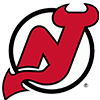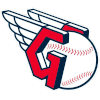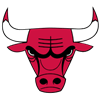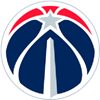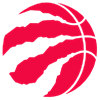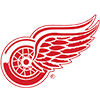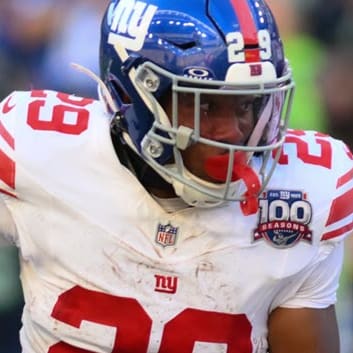Justin Herbert, Alvin Kamara
Both Justin Herbert and Alvin Kamara are nursing the same, unique injury.
The Chargers quarterback was injured late in Thursday's loss to the Chiefs. He was struck in the midsection by Kansas City defensive end Mike Danna. Kamara was injured in Week 1 in the Saints' win over Atlanta. Both players were diagnosed with a rib fracture, but it is a specific injury that does not actually involve bone. Instead, each player is managing fractures of the costal cartilage of their respective ribs.
The rib cage is made up of 12 paired ribs, the sternum (the breastbone), the thoracic vertebrae and a specialized type of tissue known as costal cartilage. The first seven pairs of ribs are connected directly to the breastbone by this cartilage. Ribs eight through 10 indirectly anchor to the sternum by linking to the costal cartilage of the ribs directly above them. The costal cartilage allows the ribcage to expand while breathing.
Given its role in breathing, it easy to understand why those experiencing costal cartilage fractures often report extremely sharp pain with activity that increases with breathing and trunk movement. While it is possible to play through the associated pain, a cartilage fracture is a significant injury and can take longer to heal than a bone fracture.
Costochondral injuries are relatively common in the NFL with several notable players missing time in recent seasons. Examples include Aaron Donald, LeSean McCoy and quarterbacks Michael Vick and Tony
Justin Herbert, Alvin Kamara
Both Justin Herbert and Alvin Kamara are nursing the same, unique injury.
The Chargers quarterback was injured late in Thursday's loss to the Chiefs. He was struck in the midsection by Kansas City defensive end Mike Danna. Kamara was injured in Week 1 in the Saints' win over Atlanta. Both players were diagnosed with a rib fracture, but it is a specific injury that does not actually involve bone. Instead, each player is managing fractures of the costal cartilage of their respective ribs.
The rib cage is made up of 12 paired ribs, the sternum (the breastbone), the thoracic vertebrae and a specialized type of tissue known as costal cartilage. The first seven pairs of ribs are connected directly to the breastbone by this cartilage. Ribs eight through 10 indirectly anchor to the sternum by linking to the costal cartilage of the ribs directly above them. The costal cartilage allows the ribcage to expand while breathing.
Given its role in breathing, it easy to understand why those experiencing costal cartilage fractures often report extremely sharp pain with activity that increases with breathing and trunk movement. While it is possible to play through the associated pain, a cartilage fracture is a significant injury and can take longer to heal than a bone fracture.
Costochondral injuries are relatively common in the NFL with several notable players missing time in recent seasons. Examples include Aaron Donald, LeSean McCoy and quarterbacks Michael Vick and Tony Romo.
Return-to-play timelines can widely vary, especially if there is damage to any underlying organs like the lungs. Fortunately, it sounds like both Herbert and Kamara avoided something serious like a collapsed lung. Still, the New Orleans running back did not play Week 2 and Herbert's status for Week 3 is in question.
Herbert should benefit from the extra few days to recuperate, as the injury occurred in the Thursday night game. Both players could opt to receive a painkilling injection prior to their Week 3 matchups but that carries its own risk. Additional padding or a flak jacket can help brace the area of concern, but those can sometimes make the midsection bulky and raise the risk of a fumble. Watch how each player progresses throughout the week to get a better idea of their Week 3 availability.
Trey Lance
Trey Lance is lost for the season after suffering a serious ankle injury. The Niners' quarterback suffered an ankle dislocation and fibula fracture in the first half of the team's win over the Seahawks. The injury occurred during a run attempt when Seattle linebacker Cody Barton collided with Lance.
The injury description is helpful for what is says AND what it doesn't say. Since the injury is described as both a fracture and a dislocation, we know the ankle joint was forced out of alignment (dislocated) and the outside lower leg, the fibula, fractured (broke). Fortunately, the injury was NOT described as an open or compound fracture, meaning the bone broke but the resulting fragments did not penetrate the skin. As a result, Lance's injury is different than the ankle injury suffered by Dallas quarterback Dak Prescott during the 2020 season. Prescott's injury was a compound ankle fracture and dislocation.
Since Lance's injury did not result in a significant soft tissue injury, he will be less likely to experience secondary complications like infection. However, surgery was still needed to stabilize the fracture site as well as an associated "ligament disruption." Plates and/or screws were likely used, allowing the bones to adequately heal in the proper orientation.
Recovery is generally between three-to-four months, though the accompanying ligament injury could prolong the estimated timeline. Still, Lance should be an active participant in training camp in next summer, barring any sort of setback.
Turf Burns
Jerry Jeudy: The Broncos' wideout was forced out of Sunday's game with an injury initially described as a shoulder injury. However, the injury designation was later changed to ribs, and Jeudy remains day-to-day as he undergoes further testing. If Jeudy's injury involves the sternoclavicular (SC) articulation, both descriptions could be considered accurate. The SC joint is located where the clavicle meets the sternum of the bony thorax, forming a key articulation in shoulder motion. SC joint sprains are relatively uncommon though receivers, including Danny Amendola and Tyreek Hill, have suffered the injury in recent seasons. A fracture of the first rib is another possibility as this bone sits behind the collarbone and often presents with pain behind the shoulder. Injuries in this area are often limiting, and it wouldn't be surprising to see Jeudy sit for at least a week. Those invested in the receiver will want to have a reliable backup ready as Denver plays Sunday night, making Jeudy a high-risk play.
Michael Pittman: A quadriceps injury in practice leading up to Week 2 forced Pittman out of the team's matchup with the Jaguars. The injury doesn't sound serious, but the receiver's recovery time was limited because it occurred on Wednesday. A quadriceps contusion would be easier to overcome than a mild to moderate quad strain but specifics on the injury remain limited. He's day-to-day, but hopefully we get a bit more clarity on the nature of the issue as the week continues.
Gabe Davis: Like Pittman, Davis suffered what appears to be a mild injury late in the week and did not play Week 2. Davis' injury sounds like a low-grade sprain, but the lack of time between the incident occurring and game day was simply too short to recover. Look for Davis to return this week.
Dalton Schultz: The Cowboys' tight end suffered a posterior cruciate ligament (PCL) knee sprain in Sunday's win over the Bengals. The PCL isn't as well-known as its infamous partner, the ACL, but it too plays a pivotal role in knee stability. The PCL sits behind the ACL and helps prevent excessive movement of the tibia on the femur and serves as an axis point for rotation. Schultz' injury is likely a mild or Grade 1 sprain and he could play if the associated symptoms, like swelling or pain, are not functionally limiting. Teammate Ezekiel Elliott suffered a PCL sprain last season and did not miss time. However, Zeke's numbers took a hit after the injury occurred and Schultz could also see a drop in productivity, especially if he is placed on a snap count. The Cowboys don't play until Monday night, increasing the inherent risk of utilizing Schultz in Week 3. Look elsewhere for a tight end this week. Rookie Jake Ferguson is Dallas' starting tight end should Schultz miss time, though it's hard to be overly confident in an unproven rookie partnered with a backup quarterback.
Check out our NFL Week 3 picks for each and every game, after getting up to date on this week's news.










